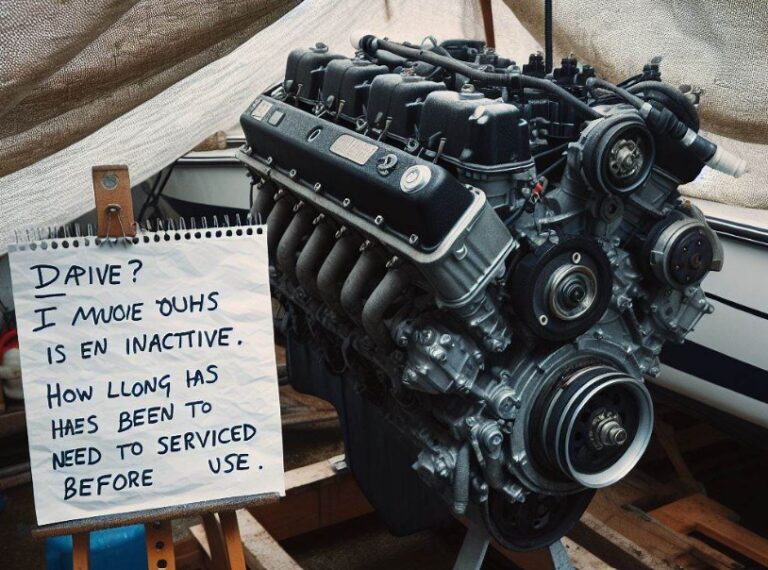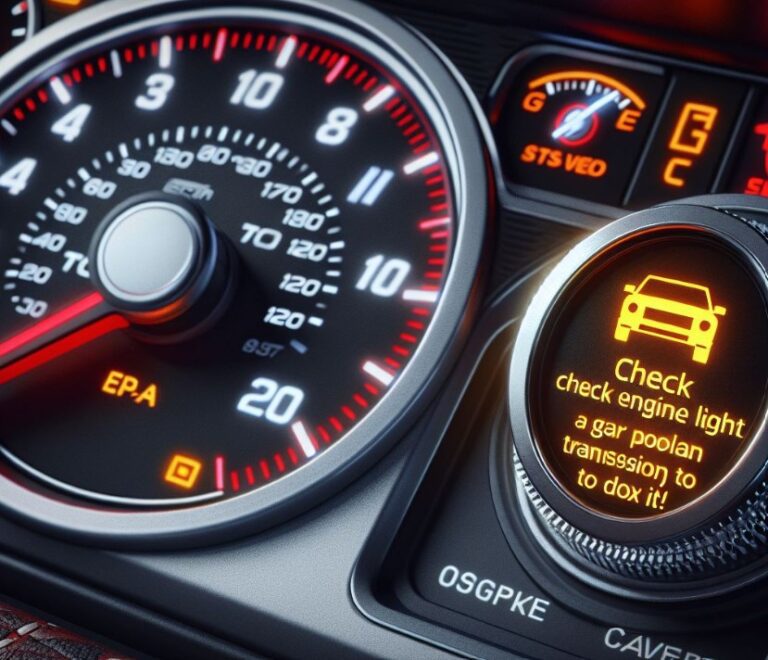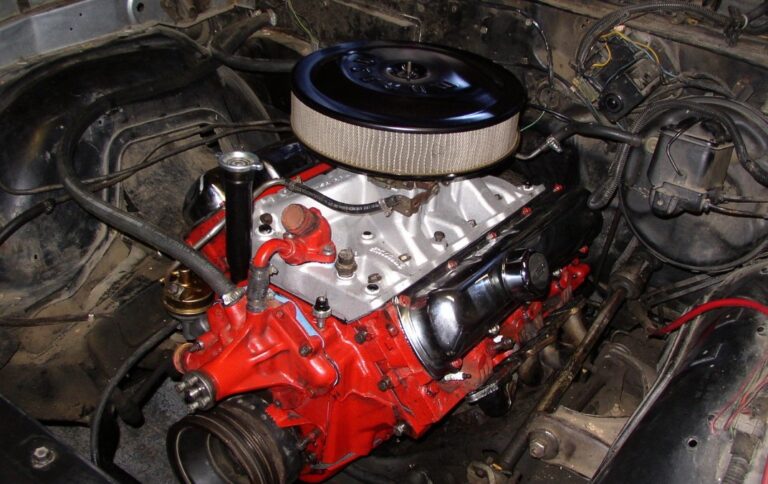How Long Can I Drive With A Nail In My Tire? Answered
Having a nail in your car’s tire cannot be very pleasant. Accidents occur, however, and the best you can do is to be ready. Please continue reading as we will assist you with this unpleasant situation. I have researched How Long Can I Drive With A Nail In My Tire?
The primary factor determining how long you can drive with a nail in your tire is the location of the puncture. You could continue driving normally for around 10 miles if the puncture was in the center of the tire.
However, if the hole was close to the tire’s sidewall, there is a good chance that the tire would blow out. Therefore, you should stop the car right away. Be aware that driving with a nail in your tire is extremely risky regardless of where the puncture is. By reading the rest of this article, see what to think about How Long Can I Drive With A Nail In My Tire? I’ll also show you how to change and spot a punctured tire. Continue reading!
Table of Contents
How Long Can I Drive With A Nail In My Tire?
You might be able to go several hundred miles before changing the tire if the leakage is slow. However, if the puncture is significant, you should change your tire immediately to continue using it.

How long can you drive with a nail in your tire based on the following:
The Nail Type
A little nail in your tire might not even create any problems. If so, you can continue to drive your automobile until the tread on your tires is at a level suitable for replacement. Some nails do not pierce the tire’s inner layer.
You should be able to travel quite a distance as long as you aren’t losing air. Remember that the nail could creep closer to your tire’s interior as you drive.
You should have the nail removed immediately if it is large. The tire’s inner is more easily pierced by larger nails than smaller ones. Therefore, there is a higher chance that you have an air leak. You can have a tire that is entirely flat if the air leak is severe enough.
The tire should be fixed as soon as possible. You should probably have the tire replaced quickly if you ran over a screw and it is still inside. Screws may open a passageway for air, likely resulting in a flat tire.
Positioning
You can continue driving if the nail is in the center of the tire and no air is lost. However, if your air pressure is dropping, you should get it replaced right away.
The tire is damaged if the nail is in the sidewall. The tire will need to be changed at your nearby tire shop. A repair is impossible since sidewall damage differs from tire tread damage.
Air Leaking
You should drive to a tire shop if your tire is losing air due to a nail or screw. You should be able to make it if your tire has 27 psi of pressure or higher. However, the likelihood of a blowout increases with decreasing pressure. If your tire pressure is significantly below what your owner’s handbook recommends, you should call a tow truck just to be safe.
What Are The Signs Of A Punctured Tire?
Some symptoms may point to a problem with your tires before they become flat. You should be aware of the warning indicators so you can stop any more harm to your car. The warning indicators are easy to recognize. Here are a few signs that your tire may have a puncture.

- An odd sensation while steering. Your tires may not be properly aligned, or you may be punctured and lose air if your automobile unnaturally veers to one side while you’re driving.
- Strange noises are audible. Your tires will hiss when punctured, which is a very noticeable sound. Your tire will make a high-pitched hissing sound as air leaks.
- Your tires appear bald. Unless you’re toting a hefty load, your tires are likely flat or under-inflated if they appear to be so. Be aware that some punctures are too small to be seen, but the appearance of your tire will always indicate how much air is in it.
- Warnings about air pressure loss. Modern automobiles have tire-monitoring technology. Tire Pressure Monitoring System, or TPMS, is the name of this technology. If your tires need to be inflated, it will let you know.
- Problems with acceleration and deceleration. Even on flat ground, your car will have trouble accelerating and decelerating while it has a function.
What To Do When Your Tire Is Punctured?
While driving, there’s a considerable probability that your tire will puncture. You ought to be ready for this situation. Here are some suggestions for handling tire punctures.

Use The Extra Tire To Replace The Damaged One
When you buy a car, it always comes with a spare tire. The spare tire is specifically mounted on the car for situations like this. You will need the following to swap out the damaged tire for the spare:
- Lug wrenches
- Jack
- Owner’s Guide
- Extra Tire
- An early warning system (if changing a tire on the side of the road).
Step-By-Step Instructions
- To start, make sure to activate the early warning system to inform other drivers that your car is parked and undergoing maintenance. To avoid your vehicle rolling unexpectedly, you should change the tire, ideally on flat ground. Applying the parking brake is a must.
- Next, take off the hubcaps from your tires, if any. To remove the hubcap’s nuts, use the lug wrench. To reveal the lug nuts, peel back the hubcap or wheel cover.
- Take off the lug nuts. The lug nuts should be turned counterclockwise using the lug wrench. You should make some effort to loosen the lug nuts.
- Lift your car. If you need help determining where to set the jack under your car, check your owner’s manual for recommended jack locations.
- Completely detach the lug nuts and take the ruptured tire off the vehicle when it is no longer in contact with the ground. Put the tire on its side and away from traffic to avoid a hazard.
- Fix the vehicle’s spare tire. Push gently to align the lug nuts with the spare tire’s rim so that they are visible through the rim.
- Bring the car down until the spare tire is in contact with the ground. Using the lug wrench, tighten the lug nuts as much as possible. The lug nuts may need to be tightened with force.
- After the lug nuts are tightened, thoroughly lower the car and remove the jack. 9. Before you start your car, put away all the equipment you used, including the spare tire. Replace the hubcap in the same manner that you removed it.
The following three great tips should be used immediately if the tire deflates significantly and quickly.
Change The Spare Tire
The best remedy is to change the tire if you have a spare tire for your automobile and all the necessary supplies. The steps listed below must be followed in order to change a spare car tire safely:
- Place it beneath the vehicle close to the tire you wish to replace, and pay close attention to the metal frame. After that, position the jack parallel to the ground.
- The screws should be symmetrically loosened but not taken out.
- Lift the wheel 2 centimeters off the ground by turning a tire wrench set clockwise. The jack serves as a pillar this time.
- Lift the wheel out of the automobile after removing all the screws.
- Replace the wheel and Add the spare tire. Keep in mind that the screws must be installed in a symmetrical pattern. In this stage, you do not need to overtighten the screws.
- Before tightening the screws, you lower the wheel to the ground.
- The screws are tightened. With a wrench, tighten each screw once more. By this point, the screws are also fastened in symmetrical positions.
- Take away the jack and finish attaching the spare tire.
Use Self-Healing Glue
The self-healing adhesive is another quick and efficient solution for car tire nail punctures. Because you need to carry self-healing adhesive, this remedy is practical. Without removing the tire, inject glue into the punctured area. You must use an automatic air pump to re-inflate the tire if it has lost too much air.
Despite being quick and practical, this method has the significant drawback of shortening tire life. Due to long-term storage, the self-healing glue’s ingredients will eventually degrade the wheels and tires.
The tire warms up, especially when moving, which causes the glue’s adhesive to dissolve in water. The glue’s ingredient will lessen the tire’s grip, which can be hazardous. So applying self-healing glue is merely a short-term solution. You must still take your car to the closest garage for prompt handling and inspection to ensure safe driving.
Plug The Leak With A Patch
Another efficient way for drivers to fix nailed automobile tires is to patch them. You don’t need to remove the tire to mend it. Remove the tire’s nail. Use the plug kit in the punctured area after that.
Place the screw into the young rubber thread. Seal the hole after trimming the extra rubber with scissors. Although speedy, this solution is just temporary. The tire can quickly lose air.
For technical professionals to inspect it after patching, the driver must also go to the closest repair facility or garage. The three suggestions above for swift management when a nail lodged in an automobile tire are all straightforward. But when you do, keep in mind these reminders:
- You must carefully and securely park on the right-hand side of the road. Be sure to activate any essential warning systems, such as emergency flashing lights, to notify oncoming traffic.
- Before repairing, check the air condition in the tire to determine whether to remove the nail.
- It is always required to equip the tools on the car to handle similar situations, such as spare car tires, car tire inflators, and disassembly kits.
Quick remedies, like using glue to cover a hole, are temporary. Drivers still need to visit the closest auto shop for maintenance and repairs.
Conclusion
Driving with a flat tire is never a smart idea. You’re putting both your and your passengers’ lives in jeopardy and the lives of other drivers on the road. Do some study to find out How Long Can I Drive With A Nail In My Tire?
Frequently Asked Questions
Is it right to drive with a nail in the tire?
You can travel a short distance on a tire with a nail in it. But the nail needs to be REMOVED. Driving for an extended amount of time is unsafe with a nail in your tire.
How fast does a tire lose air with a nail?
A nail in the tire might lose about 2-3 psi per day. The tire’s performance could be significantly worsened or even become dangerous to drive on after just two days with such an air leak. Although there won’t be much pressure loss if the nail remains in the tire tread, you shouldn’t leave it there.
Can I drive long distances with a plugged tire?
A blowout could occur if the plug separates from the tire, causing severe air pressure loss. When traveling at a high speed, this can be very dangerous. Long-distance driving on a blocked tire can also create uneven tire wear, which could result in severe tire damage.

Welcome to the exhilarating world of Matt Rex, a professional car racer turned renowned vehicle enthusiast. Immerse yourself in his captivating blog as he shares heart-pounding adventures, expert reviews, and valuable insights on cars, trucks, jets, and more. Fuel your passion for speed and discover the beauty of vehicles through Matt’s engaging stories and meticulous expertise. Join the ever-growing community of enthusiasts who find inspiration and expert advice in Matt Rex’s blog—a digital hub where the thrill of speed meets the pursuit of knowledge.



![Is Jet Skiing Safe For Non-Swimmers? [Answered]](https://www.turbochaos.com/wp-content/uploads/2023/08/Is-Jet-Skiing-Safe-For-Non-Swimmers-768x512.jpg)



